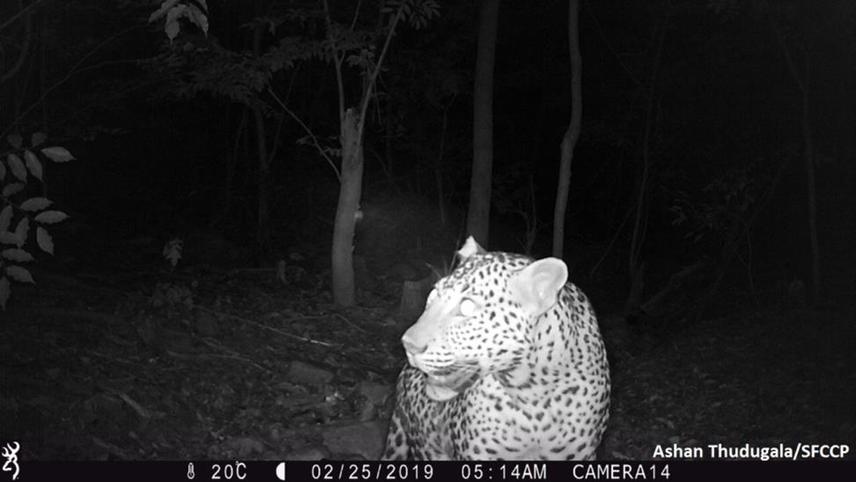Ashan Nimantha Thudugala
Sri Lanka is an island with rich biodiversity and it has three small wild cat species out of the 44 species in the world. Through this study, we targeting to monitor the fishing cat and Rusty spotted cats in hill country wet zone habitats. Both of them are considered endangered in local IUCN records and they face remarkable amount of threats in their habitats. The ultimate goal of this study is to monitor the presence and threats of these elusive small wild cats in human-mediated landscapes in hill country Sri Lanka and take necessary threat mitigation efforts to conserve these species and habitats.

Sri Lankan leopard in secondary forest habitats.
Monitoring and conservation of small wild cats in Human mediated landscapes in Hill Country Sri Lanka” project is design to monitor the small wild cats and the threats the face in central hills of Sri Lanka. As an outcome of this project we will be working towards the threat mitigation process to diminish them.
This project will be conducted in a protected landscape Dunumadalawa Forest Reserve that bordering to human settlements in every corner. Dunumadalawa comprises mainly of secondary growth forest since the site has been used earlier for tea and cocoa plantations. At present, few primary forest patches are remaining in the forest reserve. This historical forest reserve forms the catchment and protects the watershed of two reservoirs which augment the water supply to the Kandy City
Camera trapping will be the main monitoring method in the study and many other surveys will conduct at the same time to understand these small cats and how they utilize these landscapes. Additionally, we are targeting other carnivore species in study areas to see how they co-exist and how they separate their niche to minimize the competition. By observing the camera trap pictures we also can study a lot about the ecology of these elusive cats and by the use of by catch data, we also can extract loss of useful facts about other animals species in the forest and their interactions.
As a solution for the threats to these wild cat species and their prime habitats, we will conduct conservation practices focusing on small wild cats and in this area. They will be included youth camps, awareness raising workshops for school children’s, public awareness raising programs to educate the nearby villagers and general public. More over leaflets and other printed materials will be used in above programs to raise the awareness. Ultimate goal of this study is to conserve and raise awareness of these elusive small wild cat species and their habitats for future.